MEMBERS
-
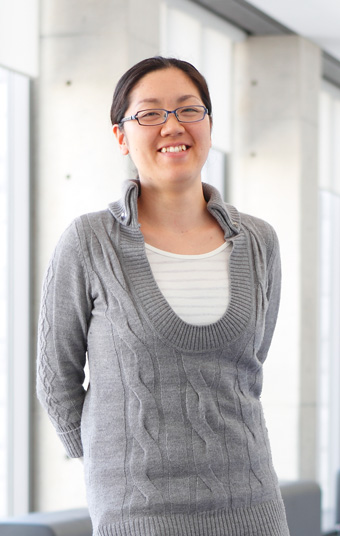
Kana Ishimatsu
Web sitePostdoctoral fellow
Department of Systems Biology
Harvard Medical SchoolTitle
Integrating Developmental Biology and Synthetic Gene Network
Standard type Period:3yearsSummary
In pattern formation processes of multi-cellular organisms, many cells coordinate their behaviors, generating an orchestrated behavior. To address this mechanism, understanding dynamics of cell-cell communication is essential. Here I will utilize 'synthetic gene networks' that can program gene expression in order to examin the cell-cell communication dynamics in a group of clock cells. In particular, I will focus on how the robust pattern formation is acheived in the developmental process, in which a system size drastically changes.
Research Results
- 5/Dec/2013
- Kana Ishimatsu、Takashi Hata、Atsushi Mochizuki、Ryoji Sekine、Masayuki Yamamura、Daisuke Kiga “General Applicability of Synthetic Gene-Overexpression for Cell-Type Ratio Control via Reprogramming”ACS Synthetic Biology (2013)
- 27/Nov/2012
- Oral Presentation: "Conferring multipotency and controlling cell-type ratio in the multicellular system by synthetic overexpression system." at the CSH-Asia Conference: Synthetic Biology. (Suzhou, China)
-
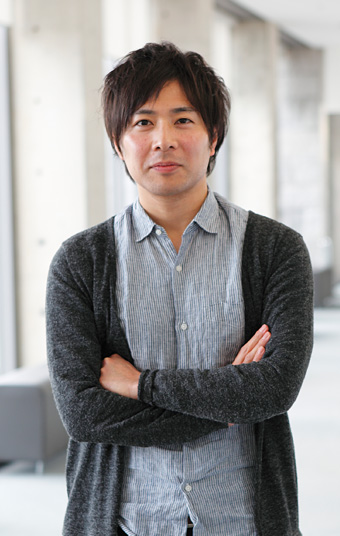
Hidehiko Inomata
Team Leader
RIKEN CDB Axial Pattern Dynamics
RikenTitle
Regulatory mechanisms of scaling in ensuring robust proportional similarity of the embryo.
Standard type Period:3yearsSummary
During the developmental process, various tissues are organized at the appropriate spaces within the embryo in a precise manner. In this process, the local pattern formations should be enlarged or reduced according to the embryonic size, and this phenomenon is termed scaling. In my project, I will quantify the parameters (e.g., diffusion, production and degradation of signaling molecules) that regulate the dynamics of the embryonic pattern formation in vivo and construct the mathematical model to elucidate regulatory mechanisms of scaling.
Research Results
- 5/Sep/2014
- Oral Presentation: "Scaling of Dorsal-Ventral Patterning by Embryo Size-Dependent Degradation of Chordin" at the KEY forum" From Stem Cells to Organs" (Kumamoto, Japan)
- 29/Jul/2014
- Oral Presentation: "Scaling of Dorsal-Ventral Patterning by Embryo Size-Dependent Degradation of Chordin"at the JSMB/SMB (Japanese Society for Mathematical Biology and the Society for Mathematical Biology) 2014 (Osaka, Japan)
- 7/Jun/2013
- Hidehiko Inomata, Tatsuo Shibata, Tomoko Haraguchi, Yoshiki Sasai (RIKEN Center for Developmental Biology) “Scaling of Dorsal-Ventral Patterning by Embryo Size-Dependent Degradation of Spemann's Organizer Signals”Cell. 153, 1296-1311 (2013)
- 10/Sep/2012
- Oral presentation: “Long-Range Regulation of Chordin Degradation via Sizzled Accumulation Directs Robust Self-Shaping of Embryonic Dorsal-Ventral Pattern” at the 14th International Xenopus Conference (Giens Peninsula, France)
- 27/Mar/2012
- Oral presentation: “Long-range regulation of Chordin degradation via Sizzled accumulation directs robust self-shaping of embryonic dorsal-ventral pattern” at the CDB Symposium 2012 Quantitative Developmental Biology (Kobe)
-
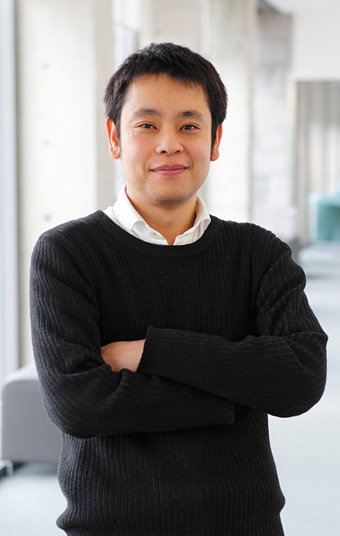
Motomu Endo
Associate Professor
Graduate School of Biostudies
Kyoto UniversityTitle
Constructive approach for understanding tissue-specific clock functions in plants
Standard type Period:3yearsSummary
The biological clock is one of the fundamental mechanisms to adress enviromenta changes and many genes are regulated by the clock. Tissue-specific clock functions have been assumed in plants but this hypothesis has not been tested because of technical problems. Here, by using constructive approach, we aim to figure out tissu-specific clock functions in plants.
Research Results
- 1/Dec/2014
- On November 30th, Dr.Motomu Endo completed this PRESTO. He started the PRESTO of "Innovative technology platforms for integrated single cell analysis" on December 1st.
- 3/May/2013
- Invitation Lecture: "Tissue-specific regulation of circadian clock in plants"at the 11th Kyoto University National Taiwan University Symposium:Japan(Kyoto)
-
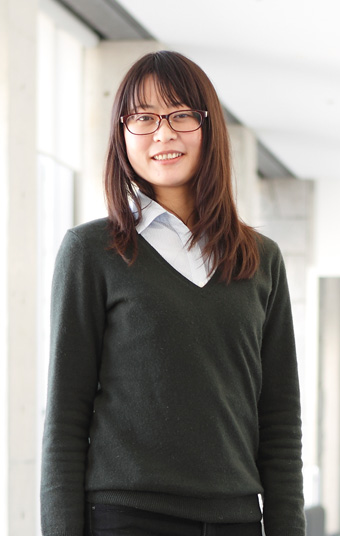
Fumi Kano
Associate Professor
Institute of Innovative Research
Tokyo Institute of TechnologyTitle
Establishment of disease model cells by resealing cell technique
Standard type Period:3yearsSummary
Semi-intact cells are cells, whose plasma membrane is permeabilized with pore forming streptococcal toxin Streptolysin O. Recently, we have developed an innovative method for resealing plasma membranes after introducing cytosol: a resealing cell technique. One goal of this study is the establishment of disease model cells by changing the intracellular condition to the disease states by introducing the pathogenic cytosol, which is prepared from the organs of disease model mice, into the cells. The disease model cells enable investigating the aberrant molecular network in the intracellular disease condition and further being applied as screening system for drug discovery.
Research Results
- 3/Mar/2015
- Tamaki Arai, Fumi Kano, Masayuki Murata. "Translocation of FOXO1 to the nuclear periphery induces histone modifications that regulates transcriptional repression of PCK1 in HepG2 cells" Genes to Cells 2015 Mar 3. doi: 10.1111/gtc.12226.
- 23/Feb/2015
- Nakatsu, D., Horiuchi, Y., Kano, F., Noguchi, Y., Sugawara, T., Takamoto, I., Kubota, N., Kadowaki, T., Murata, M. " L-cysteine reversibly inhibits glucose-induced biphasic insulin secretion and ATP production by inactivating PKM2" Proceedings of the National Academy of Sciences of the United States of America. 2015. . pii: 201417197.
- 30/Dec/2014
- Tamaki Arai, Fumi Kano, Masayuki Murata."Translocation of FOXO1 to the nuclear periphery induces histone modifications that regulates transcriptional repression of PCK1 in HepG2 cells" Genes to Cells in press
- 1/Jul/2014
- Daiki Nakatsu, Fumi Kano, Yuki Taguchi, Taichi Sugawara, Takashi Nishizon, Kiyotaka Nishikawa, Yukako Oda, Mikio Furuse, and Masayuki Murata,“JNK1/2 dependent-phosphorylation of angulin-1/LSR is required for the exclusive localization of angulin-1/LSR and tricellulin at tricellular contacts in EpH4 epithelial sheet”Genes to Cells, 19(7), 565-581.2014
- 15/Sep/2013
- Oral Presentation: "Disease model cell system: a novel proteomics tool to elucidate protein networks with spatio-temporal information" at the 12th Human Proteome Organization Congress, Yokohama, Japan
- 5/Aug/2013
- Katsunori Fujiki, Akihiro Shinoda, Fumi Kano, Ryuichiro Sato, Katsuhiko Shirahige & Masayuki Murata“PPARγ-induced PARylation promotes local DNA demethylation by production of 5-hydroxymethylcytosine”Nature Communications, 4, Article number: 2262. doi:10.1038/ncomms3262.2013
- 02/Feb/2013
- Oral Presentation: "Disease model cell system for analyzing the perturbation of signal transduction under disease condition." at the 1st International Symposium on Protein Modifications in Pathogenic Dysregulation of Signaling. (Tokyo, Japan)
- 27/Nov/2012
- Invitation Lecture: "A Resealed-Cell System for Analyzing Pathogenic Intracellular Events: Insight into Signal Transduction Cascade in Hyperlipidemic or Diabetic Cells." at the The 25th Annual and International Meeting of the Japanese Association for Animal Cell Technology (JAACT2012). (Nagoya, Japan)
- 10/Oct/2012
- Al Awabdh S, Miserey-Lenkei S, Bouceba T, Masson J, Kano F, Marinach-Patrice C, Hamon M, Emerit MB, Darmon. "A new vesicular scaffoldig complex mediates the G-protein coupled 5-HT1A receptor targeting to neuronal dendrites" J. Neurosci., 32(41):14227-14241.
- 29/Aug/2012
- Kano F, Nakatsu D, Noguchi Y, Yamamoto A, Murata M. “A Resealed-Cell System for Analyzing Pathogenic Intracellular Events: Perturbation of Endocytic Pathways under Diabetic Conditions.” PLoS One. 2012;7(8):e44127.
- 11/Apr/2012
- Masayuki Murata1, Fumi Kano1,2(1 Graduate School of Arts and Sciences, The University of Tokyo, 2 PRESTO, Japan Science and Technology Agency)“emi-intact cell system: Application to the nalysis of membrane trafficking beween the endoplasmic reticulum and the Golgi apparatus and of cell cycle-dependent changes in the morphology of these organelles.”Crosstalk and Integration of Membrane Trafficking Pathways. (Weigert, R. ed.) INTECH (ISBN 978-953-51-0515-2)
-
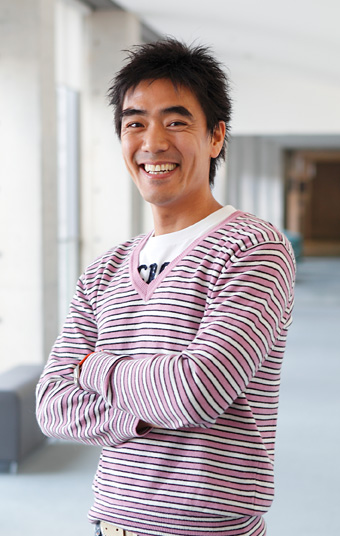
Motoshi Kaya
Web siteAssistant Professor
Graduate School of Science
University of TokyoTitle
Visalization of single protein molecule dynamics revealing its functional characteristics in assembly of proteins and in vivo organs
Standard type Period:3yearsSummary
In order to understand the functional characteristics of single protein molecules integrated into the different hierarchical structures, such as assembly of proteins, cells, and organs, skeletal muscle myosins are investigated at in-vitro and in-vivo experimental condtions. The high accuracy imaging system will be developed to detect dynamics of the targeted single myosin in in-vitro synthetic myosin filaments (multiple-myosin molecule systems) and in-vivo mouse skeletal muscles. Based on these experimental results combined with the theoretical model, the functional charcteristics of single protein molecules at different hierarchical structures will be clarified.
Research Results
- 7-11/Feb/2015
- Presentation: "Intermolecular cooperativity of skeletal myosins enhances force output in myofilaments." at the 59th Biophysical Society Annual Meeting,Baltimore, USA.
- 1/Jul/2014
- Oral Presentation: "Intermolecular Cooperativity of Skeletal Myosins in Myofilaments"at the 2014 Gordon Research Conference in Muscle and Molecular Motors Mount Snow Resort (West Dover, VT USA)
- 24-28/Feb/2012
- Oral presentation: “Effect of non-linear elasticity of skeletal myosins on force generation in muscle.”at the 56th annual meeting of Biophysical Society, Motility subgroup symposium, San Diego USA
-
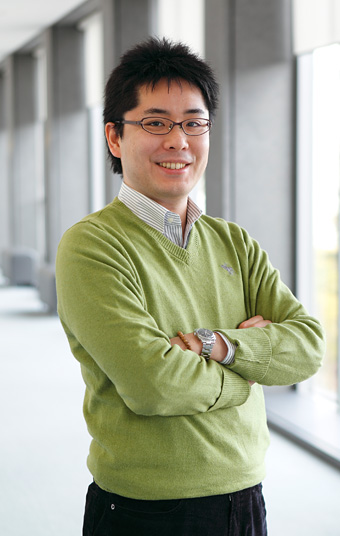
Yuki Goto
Associate Professor
Graduate School of Science
The University of TokyoTitle
Discovery and production of artificial secondary metabolites
Standard type Period:3yearsSummary
Biosynthetic enzymes for secondary metabolites play roles in production of various natural products bearing diverse peculiar structures. In this research program, we will create a cell-free artificial biosynthesis system by reconstituting translation system and posttranslational biosynthetic enzymes in vitro. By utilizing this artificial system, we are aiming at in vitro biosynthesis of diverse unnatural compounds as well as discovery of “artificial secondary metabolites” exhibiting unique bioactivities. We will also address creation of artificial cells producing the artificial secondary metabolites.
Research Results
- 19/Jun/2014
- Goto Yuki, Ito Yumi, Kato Yasuharu, Tsunoda Shotaro, Suga Hiroaki,“One-Pot Synthesis of Azoline-Containing Peptides in a Cell-free Translation System Integrated with a Posttranslational Cyclodehydratase” Chemistry & Biology 2014 ;21(6):766-74.2014
- 20/Dec/2013
- Y. Goto; M. Iseki; A. Hitomi; H. Murakami; H. Suga. "Nonstandard peptide expression under the genetic code consisting of reprogrammed dual sense codons" ACS Chem. Biol., 2013, 8, 2630-4.
- 2013
- Y. Goto; S. Tsunoda; Y. Kato; Y. Ito; H. Suga. "PatD FIT system: A versatile synthetic tool for azoline-containing peptides" Pept. Sci., 2013, 50, 89-90
- 7/Nov/2013
- Dr.Yuki Goto was awarded the Excellent Stone Award at the 4th Asia-Pacific International Peptide Symposium4th Asia-Pacific International Peptide Symposium
- 6/Nov/2013
- Oral Presentation: "PatD-FIT system: A versatile synthetic tool for azoline- containing peptides" at the 4th Asia-Pacific International Peptide Symposium,Osaka
- 24/Jun/2013
- Oral Presentation: "Unexpected in-vitro versatility and promiscuity of a posttranslational cyclodehydrase" at the 23rd American Peptide Symposium, Hawaii, USA
- 9/May/2013
- Oral Presentation: "Unexpected in-vitro versatility and promiscuity of a posttranslational heterocyclase" at the 5th Gratama Work shop (Tokyo, Japan)
- 29/Nov/2012
- Oral Presentation:“Unique catalytic activity of a posttranslational heterocyclase revealed via an artificial in vitro biosynthesis system”at the First International Symposium on Biofunctional Chemistry (ISBC2012).(Tokyo, Japan)
- 16/Apr/2013
- Yuki Goto was awarded the Young Scientists' Prize on the Commendation for Science and Technology by the Minister of Education, Culture, Sports, Science and Technology.
- 14/Aug/2012
- Iwasaki K, Goto Y, Katoh T, Suga H. “Selective thioether macrocyclization of peptides having the N-terminal 2-chloroacetyl group and competing two or three cysteine residues in translation"Org. Biomol. Chem. 2012 Aug 14;10(30):5783-6.
- 5/Jul/2012
- Oral presentation: “An Artificial In Vitro Biosynthesis System Reveals a Unique Catalytic Activity of a Posttranslational Heterocyclase” at the The Second Asian Chemical Biology Conference(Itoman,Okinawa)
- 3/Apr/2012
- Garg N, Tang W, Goto Y, Nair SK, van der Donk WA. "Lantibiotics from Geobacillus thermodenitrificans."Proc. Natl. Acad. Sci. USA 2012 Apr 3;109(14):5241-6
-
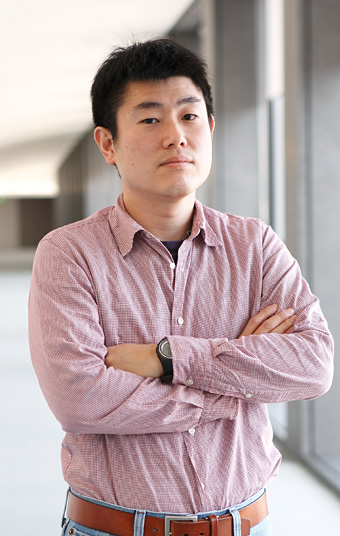
Satoshi Sawai
Web siteAssociate Professor
Graduate School of Arts and Sciences
University of TokyoTitle
Towards understanding and manipulation of self-organizing aspects of cell shape dynamics and cell motility.
Standard type Period:5yearsSummary
The project focuses on self-organizing dynamics of the sensory system and motility in amoeboid cells. The aim is to quantitatively analyze spatio-temporal patterning of the spontanoeus dynamics in phosphoinoisties lipid signaling and F-actin network by live-cell imaging and understand its basic properties from dynamics inherent in non-equillibrium non-linear systems. Through model prediction and live-cell manipulation, the project will investigate the system-level principle underlying amoeboid movement and seeks to remotely control the cellular dynamics.
Research Results
- 21/Jul/2016
- Oral Presentation: "Micro fluidic analysis of collective cell migration in Dictyostelium "at the 26th International Conference on Statistical Physics 2016.
- 29/Jun/2016
- Fumihito Fukujin, Akihiko Nakajima, Nao Shimada, Satoshi Sawai "Self-organization of chemoattractant waves in Dictyostelium depends on F-actin and cell-substrate adhesion." Journal of the Royal Society Interface Jun;13(119). pii: 20160233.
- 17/Feb/2016
- Oral Presentation: "Delineating temporal and spatial aspects of directional sensing in migrating cells." ,"Quantitative analysis of contact following in Dictyostelium cells"at the 4th Annual Winter Q-Bio Meeting. Hawaii, USA.
- 9-11/Jan/2016
- Oral Presentation:"Asymmetric chemotaxis response of neutrophil-like HL60 cells to temporally increasing/decreasing fMLP gradient stimulus","Revisiting cell migration mechanisms of crawling cells " ,"Numerical study of a phase-field model that incorporate chemotaxis and cell-cell interaction.","Dynamics of Dictyostelium cells on complex surface topography" at the International symposiums and workshops (Japan q-bio week). Tokyo, Japan.
- 26/Aug/2015
- Oral Presentation: "Leading edge dynamics during collective migration of Dictyostelium cells" at the QBiC Symposium 2015 "High-Dimensional Data for the Design Principles of Life" Osaka Japan.
- 23/Aug/2015
- Oral Presentation: "Chemotaxis and Contact-Mediated Ordering of Directionality in Aggregating Cells" at the International Symposium in Synergy of Fluctuation and Structure out of Equilibrium 2015 Kyoto, Japan.
- 16/Feb/2015
- Presentation: "Collective movement of ameboid cells driven by attachment-dependent ordering of directionality" at the Focus Meeting of the Kyoto Winter School for Statistical Mechanics: From Non-equilibrium Fluctuations to Active Matter.
- 8/Feb/2015
- Presentation: "Integration of space and time information in long-range cell migration" at the 59th Annual Biophysical Society Meeting Symposium “Emergent Properties and Collective Behaviors of Complex Systems”(Baltimore Convention Center, Baltimore MD USA)
- 4/Dec/2014
- Presentation: “Collective migration and rectified directional sensing”at the Mechano-Biology Institute-Japan Joint Symposium on “Mechanobiology of Development and Multicellular Dynamics” (National University of Singapore )
- 6/Nov/2014
- Nakajima A, Ishihara S, Imoto D, Sawai S. "Rectified directional sensing in long-range cell migration" Nat Commun. 2014 Nov 6;5:5367. doi: 10.1038/ncomms6367.
- 18-21/Oct/2013
- Oral Presentation:"Singularity in space and time in single-cell and mutlicellular dynamics" at the Edward C. Cox Symposium Princeton Univeristy,USA
- 27/Jun/2013
- K. Fujimoto, S. Sawai "A Design Principle of Group-level Decision Making in Cell Populations." PLoS Compt. Biol. 9(6): e1003110. (2013)
- 18/Sep/2013
- Invitation Lecture: "Analysis and manipulation of self-organizing lipid signaling" at the International Workshop From Soft Matter to Protocell (Miyagi, Japan)
- 10/Jul/2013
- Invitation Lecture: "How cells get together with right tempo and orientation -an example from social amoeba" at the 61st NIBB conference Cellular community in mammalian embryogenesis (Aichi, Japan)
- 1/Jul/2013
- Invitation Lecture: "Resolving front and back of ‘chemotactic wave paradox" at the International Symposium on Systems Biology of Cellular Signaling (Tokyo, Japan)
- 11/Jun/2013
- Invitation Lecture: "Resolving the ‘chemotactic wave paradox’" at the 7th International Conference on Engineering Complexity(Warnemuende, Germany)
- 26/Mar/2013
- D. Taniguchi, S. Ishihara, T. Oonuki, M. Honda-Kitahara, K. Kaneko and S. Sawai. "Phase geometries of two-dimensional excitable waves govern self-organized morphodynamics of amoeboid cells" Proc. Natl. Acad. Sci. USA, Vol. 110, No. 13, pp. 5016-5021.
- 17/Mar/2013
- Invitation Lecture: "Wave geometries and cell shape dynamics" at the 10th NIBB-EMBL Symposium 2013 on Quantitative Bioimaging(Aichi, Japan)
- 14/Mar/2013
- K. J. McQuade, A. Nakajima, A. N. Ilacqua, N. Shimada and S. Sawai. "The green tea catechin epigallocatechin gallate (EGCG) blocks cell motility, chemotaxis and development in Dictyostelium discoideum" PLOS ONE, Vol. 8, No.3.
- 05/Mar/2013
- N. Masaki, K. Fujimoto, M. Honda-Kitahara, E. Hada and S. Sawai. "Robustness of Self-Organizing Chemoattractant Field Arising from Precise Pulse Induction of Its Breakdown Enzyme: A Single-Cell Level Analysis of PDE Expression in Dictyostelium" Biophys. J., Vol. 104, No. 5, pp. 1191–1202.
- 19/Sep/2012
- Oral presentation: “Geometries of phosphatidylinositol waves and large-scale membrane deformation during spreading and random movement of Dictyostelium” at the International workshop on "Active Dynamics on Microscales: Molecular Motors and Self-Propelling Particles"(Leiden、Holland)
- 19-23/Aug/2012
- Oral presentation: “Tunable Collectivity of Cell Fate Decision Contributed Talk” at the 13th annual International Conference on Systems Biology, (Toronto. Univ.Canada)
- 30/Jul/2012
- Oral presentation: “Geometries of phosphatidylinositol waves and large-scale membrane deformation in randomly moving Dictyostelium.”at the International Dictyostelium Conference Dicty 2012(Madrid、Spain)
- 9/Apr/2012
- Satoshi Sawai was awarded the Young Scientists' Prize on the Commendation for Science and Technology by the Minister of Education, Culture, Sports, Science and Technology.
-
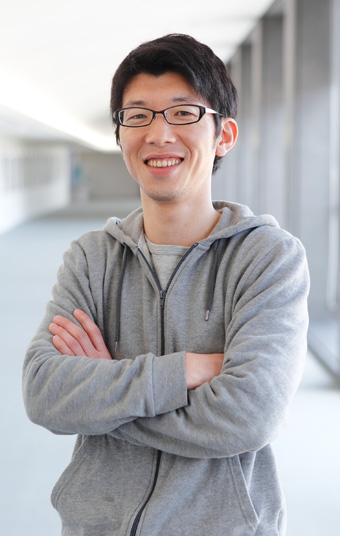
Masayuki Suetsugu
Web siteAssociate Professor
Dept. of Life Sciences
Rikkyo UniversityTitle
Reconstitution of Oscillation Circuit for Chromosome Replication
Standard type Period:3yearsSummary
Chromosome replication is a fundamental event for self-replication of cells. The initiator activity for chromosome replication oscillates in Escherichia coli cells. This oscillation can be explained by initiator regulation network including a feedback loop. In this project, I aim to reconstitute the “initiator oscillation circuit” and thereby to drive “periodic chromosome replication cycle.“
Research Results
- 16/May/2013
- Su'etsugu, M1,2., Harada, Y.1, Keyamura, K.1, Matsunaga, C.1, Kasho, K.1, Abe, Y.1, Ueda, T.1 and Katayama, T.1 (1Kyushu University Graduate School of Pharmaceutical Sciences, 2College of Science, Rikkyo University)“DnaA N-terminal domain interacts with Hda to facilitate replicase clamp-mediated inactivation of DnaA”Environ. Microbiol., 10.1111/1462-2920.12147
-
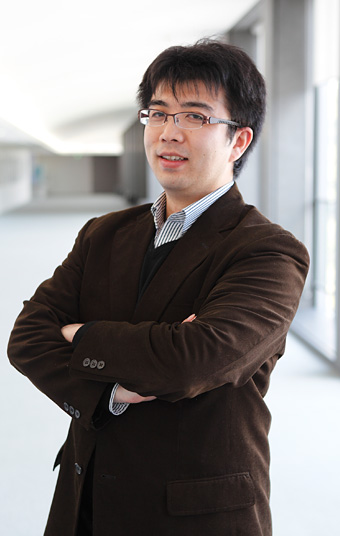
Masahiro Takinoue
Web siteAssociate Professor
Interdisciplinary Graduate School of Science and Engineering
Tokyo Institute of TechnologyTitle
Quantitative analysis for spatiotemporal dynamics of nonequilibrium artificial cell models
Standard type Period:3yearsSummary
This project aims for (i) developing a fundamental technology for quantitative analysis of spatiotemporal dynamics of nonequilibrium artificial cells, and (ii) revealing life systems based on a constructive approach in terms of time-evolving self-organized molecular systems far from equilibrium. Microfluidic technology achieves the construction of nonequilibrium artificial cells; the micrometer-sized spaces, liquids, an interfaces of the artificial cell are precisely controlled by the microfluidic technology. In addition, quantitative analysis of spatiotemporal dynamics of molecular reactions in and out of the artificial cells is realized by biophysical technology.
Research Results
- 20/Jan/2016
- Haruka Sugiura, Manami Ito, Tomoya Okuaki, Yoshihito Mori, Hiroyuki Kitahata, and Masahiro Takinoue. "Pulse-density modulation control of chemical oscillation far from equilibrium in a droplet open-reactor system " Nature Communications 2016 Jan 20;7:10212. doi: 10.1038/ncomms10212.
- 22/Oct/2014
- Hitoyoshi Yamashita, Masamune Morita, Haruka Sugiura, Kei Fujiwara, Hiroaki Onoe, Masahiro Takinoue. " Generation of Monodisperse Cell-Sized Microdroplets using a Centrifuge-Based Axisymmetric Co-Flowing Microfluidic Device" Journal of Bioscience and Bioengineering 2015 Apr;119(4):492-5. doi: 10.1016/j.jbiosc.2014.09.018. Epub 2014 Oct 22.
- 05/Feb/2013
- Invitation Lecture: "Nano/micro-technologies for the Construction of Non- equilibrium Artificial Cell Models." at the French-Japanese Seminar on “Bioinspired Methods and Applications”. (Tokyo, Japan)
- 25/Jan/2012
- Nature Digest(Interview), vol.9, no.2, pp.26-27 2012
-
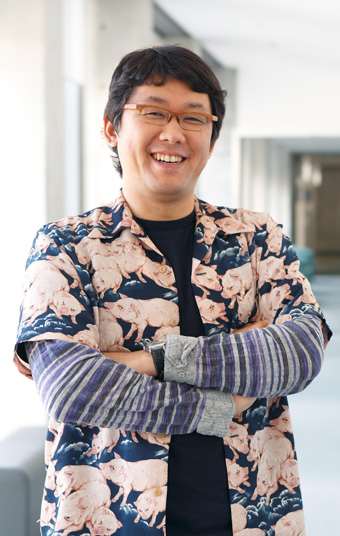
Kazuhito Tabata
Lecturer
Department of Applied Chemistry
The university of TokyoTitle
Development of bacterium reconstitution device
High Impact type Period:3yearsSummary
Living cell is impossible to reconstitute even if proteins and DNA are collected and mixed together. I think this is because that the state of membranes and protein concentration in a cell is lost. So in this research, I will develop a method to reconstitute bacteria by using a micro-device without its state of being lost. And through this research, I will approach the principle of how each cell function is integrated and the more complicated system of living organism is created.
Research Results
- 2-7/Jul/2016
- Oral Presentation: "Reconstitution of a cell in femto litter sized microchamber array" at the EBEC2016 Italy.
- 19/Dec/2015
- Oral Presentation: "Single particle counting of influenza virus by micro droplet array" at the Pacifichem 2015. Hawaii, USA.
- 28/Jun-3/Jul/2015
- Oral Presentation: "Reconstitution of a cell in femto litter sized microchamber array." at the Gordon research conferences Synthetic Biology, Sunday River, Newry, ME, USA.
- 22-27/Jun/2015
- Oral Presentation: "HYBRID CELL ~SINGLE CELL BACTERIUM FUSED MICRODEVICE~"at the Emergence in Chemical Systems 4.0, University of Alaska Anchorage.
- 3/Dec/2014
- Presentation: "Carrying skeletal elements by novel type of cells enables the self-organizing construction of 4D skeleton of sponges" at the MBI-Japan joint symposium National University of Singapore, Singapore
- 17-19/Nov/2014
- Presentation: "Spiculous skeleton construction of sponges: the dynamic process, in which siliceous spicules are carried, held up/build up inside the sponge body" at the 62nd NIBB conference “Force in Development”(Okazaki, Japan)
- Oct/2014
- Presentation: "PREPARATION AND ANALYSIS OF BACTERIA HYBRID CHAMBER CELLS" at the 18th International Conference on Miniaturized Systems for Chemistry and Life Sciences, San Antonio, Texas, USA.
- 9/Oct/2014
- Muraoka T, Endo T, Tabata KV, Noji H, Nagatoishi S, Tsumoto K, Li R, Kinbara K. "Reversible ion transportation switch by a ligand-gated synthetic supramolecular ion channel. " J Am Chem Soc.136(44):15584-95
- 6/Oct/2014
- Yaginuma H, Kawai S, Tabata KV, Tomiyama K, Kakizuka A, Komatsuzaki T, Noji H, Imamura H. "Diversity in ATP concentrations in a single bacterial cell population revealed by quantitative single-cell imaging."Sci Rep.;4:6522.
- 9/Sep/2014
- Oral Presentation: "ANALYSIS OF A SINGLE CELL FUSED MICRODEVICE"at Joint Meeting of the 1st Africa International Biotechnology & Biomedical Conference and the 8th International Workshop on Approaches to Single-Cell Analysis (Nairobi, Kenya)
- 24/Jul/2014
- R. Watanabe, N. Soga, D. Fujita, K.V. Tabata, L. Yamauchi, SH. Kim, D. Asanuma, M. Kamiya, Y. Urano, H. Suga, H. Noji., "Arrayed Lipid Bilayer Chambers Allow Single Molecule Analysis of Membrane Transporter Activity." Nature Communications;5:4519
- 12-17/Jul/2014
- Oral Presentation: "Direct observation of CWD bacteria reproduction"at the EBEC2014, (Lisbon, Portugal)
- Jul/2014
- Kazuhito Tabata, Takao Sogo, Hiroyuki Noji, "Direct observation of CWD bacteria reproduction" Biochimica et Biophysica Acta (BBA) - Bioenergetics, Volume 1837, Supplement, July 2014, Pages e91-e92 2014
- Apr/2014
- Oral Presentation: "Kazuito V. Tabata, Direct observation of CWD bacteria reproduction." at the EBEC2014, Lisbon, Portugal.
- Apr/2013
- Watanabe R, Tabata KV, Iino R, Ueno H, Iwamoto M, Oiki S, Noji H. "Biased Brownian stepping rotation of FoF1-ATP synthase driven by proton motive force." Nat Commun.4:1631.
- 20-24/Jan/2013
- Oral Presentation:"Attoliter order droplet formation using nanochannels and enzyme reaction inside a droplet" at the 2013 IEEE 26th International Conference on Micro Electro Mechanical Systems (MEMS) in Taipei(Taiwan).
- 5/Sep/2012
- Mizue Tanigawara, Kazuhito V. Tabata, Yuko Ito, Jotaro Ito, Rikiya Watanabe, Hiroshi Ueno, Mitsunori Ikeguchi, Hiroyuki Noji, “Role of the DELSEED Loop in Torque Transmission of F1-ATPase.”Biophys J.;103(5):970-8.
-
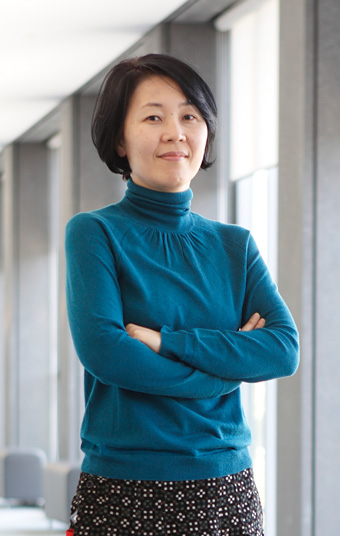
Noriko Funayama
Web siteAssociate professor
Graduate School of Science, Dept. of Biophysics
Kyoto-UniversityTitle
Toward understanding the mechanisms by which sponges construct the spiculous skeleton that supports the sponge body
Standard type Period:5yearsSummary
The Spiculous skeletons of glass sponges such as of Eupletella sp. are well known not only for their beauty but also their outstanding mechanical rigidity. It is fascinating to clarify the mechanisms by which spicules are held-up and connected to construct the skeleton while sponges develop and expand their body. Based on our previous work about the identification of multiple types of cells that are involved in spiculous skeleton construction in freshwater sponges, we will attempt to clarify the fundamental rules that govern how these multiple types of cells interact and coordinate to construct the spiculous skeleton in a stepwise manner. We also will focus on how sponges sense the environmental and mechanical forces and modify the spiculous skeleton to adjust them.
Research Results
- 15/Oct/2015
- Invited Lecture: "What we can learn from sponges? -Origin of stem cells and a novel mechanism to construct 3-dimensional body-" at the Spongex Meeting.
- 14/Oct/2015
- Oral Presentation: What we can learn from sponges? ? Origin of stem cells and a novel mechanism to construct 3-dimensional body.”at the origin of metazoans International Workshop, French Riviera.
- 17/Sep/2015
- Sohei Nakayama, Kazushi Arima, Kotoe Kawai, Kurato Mohri, Chihiro Inui, Wakana Sugano, Hibiki Koba,Kentaro Tamada, Yudai J. Nakata, Kouji Kishimoto, Miyuki Arai-Shindo, Chiaki Kojima, Takeo Matsumoto, Toshihiko Fujimori, Kiyokazu Agata, and Noriko Funayama,"Dynamic Transport and Cementation of Skeletal Elements Build Up the Pole-and-Beam Structured Skeleton of Sponges" Current Biology 25, 1-6
- 14/Sep/2015
- Oral Presentation: "Transport and cementation of skeletal elements into pole-and-beam structure in sponges"at the International Workshop,“Animal evolution: new perspective s from early emerging metazoans”Tutzing, Germany
- 3/Sep/2015
- Oral Presentation:"How sponges adjust their skeleton construction to their plastic and indeterminate growth","Establishment of spicule mechanical wobbling system in E.fluviatilis" and "Switchback of the spicule transport during local retraction of basal epithelium in BIO-treated sponges Establishment of spicule mechanical wobbling system in E.fluviatilis" at the 48th Annual Meeting of the Japanese Societly of Developmental Biologists. Tsukuba city, Ibaragi.
- 23/Sep/2013
- Oral Presentation: "How do sponges build up the spiculous skeleton ?" at the International Workshop “Unravelling the Developmental Regulatory Network in Early Animals”(Germany・Tutzing)
- 31/May/2012
- Oral Presentation: "Building up the spiculous skeleton: the collaborative work of multiple types of cells in sponges." at the Joint Meeting of the 45th Annual Meeting of the JSPS and the 64th Annual Meeting of JSCB. (Kobe, Japan)
- 11/Jul/2012
- Oral presentation: " Building up the spiculous skeleton: the collaborative work of multiple types of cells in sponges"、"Toward Establishing a Gene Functional Analysis Method in a Freshwater Sponge, Ephydatia fluviatilis" at the Euro Evo Devo 2012 (Lisbon, Portugal)
- 5/Jul/2012
- Oral presentation: "The active stem cell specific expression of sponge Musashi homolog EflMsiA suggests its involvement in maintaining the stem cell state" at the COS symposium(Heidelberg,Germany)
-
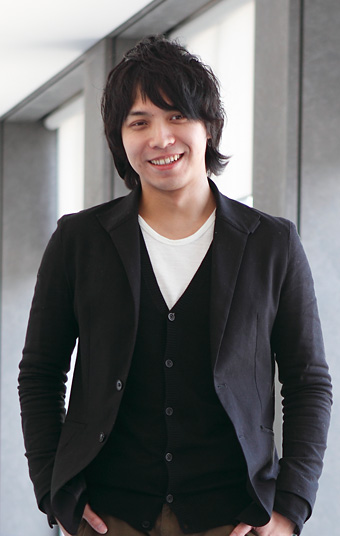
Yusuke Maeda
Web siteAssociate Professor
Faculty of Sciences
Kyushu UniversityTitle
Understanding the origins of life through molecular transport: Dynamic coupling of structure, information, transport and its application to new molecular manipulation
High Impact type Period:3yearsSummary
How can the boundary between life and matters be accounted for? To address this issue, I investigate non-equilibrium transport phenomenon for which polymers such as RNA are accumulated and separated. Its mechanism can establish new physical systems in biology and may give a scenario relevant for the origins of life. Moreover, by using little material dependence of the transport phenomenon, an innovative molecular manipulation that allows us to reconstruct cell functions and tissues is invented.
Research Results
- 10/Jan/2016
- Invited Lecture: "A physicist's approach to the origin of life: Non-equilibrium entropic force." at the National Institute of Genetics International Symposium 2016(Tokyo), The University of Tokyo. Japan
- 23/Oct/2015
- Tatsuya Fukuyama, Ariko Fuke, Megumi Mochizuki, Ken-ichiro Kamei, and Yusuke T. Maeda. "Directing and boosting of cell migration by the entropic force gradient in polymer solution." Langmuir vol.31, 12567-12572 (2015)
- 19/Aug/2015
- Takuya Ohmura, Masatoshi Ichikawa, Ken-ichiro Kamei, and Yusuke T. Maeda,"Oscillation and collective conveyance of water-in-oil droplets by microfluidic bolus flow" Applied Physics Letters, volume 107, 074102 (2015)
- Oct/2014
- Dr.Yusuke Maeda was awarded the Young Scientist Award of the Physical Society of Japan.
- 12/Sep/2014
- Oral Presentation: "Synthetic biology towards the construction of minimal cells"at Sweden- Kyoto Symposium, Outstanding young scientist session, Uppsala University (Sweden)
- 16/Jun/2014
- Oral Presentation: "Opto-thermal approach for studying genetic polymers and cells"at International symposium: Breaking barriers, from Physics to Biology Ⅱ (Xian, China)
- 2/Mar/2014
- Oral Presentation: "Opto-thermal approach for pattern formation of soft biological materials" at the International Workshop on Spatiotemporal Pattern Formation in Biological and Active Matters,Tokyo
- 13/Dec/2013
- Yusuke T. Maeda "(2+1)-Dimensional manipulation of soft biological materials by opto-thermal-diffusiophoresis" Applied Physics Letters, volume 103, 243704 (2013)
- 18/Jul/2013
- Invitaion Lecture: "Motion, pattern and collective oscillation in complex biological fluids out of equilibrium" at the BioComplex Taiwan 2013: Taiwan International workshop on biological physics and complex systems, National Taiwan University (Taipei, Taiwan)
- 28/Mar/2013
- Invitation Lecture: "Self-organization and phoretic motions for the origin of life" at the 1st ELSI International Symposium,Tokyo.
- 23/Jan/2013
- Invitation Lecture: "Molecular transport of DNA/RNA in thermal and solute gradients: Possible sorter for the early life" at the Origins of life 2013, Princeton University, USA.
- 16/Oct/2012
- Yusuke T. Maeda、Tsvi Tlusty、Albert Libchaber "Effects of long DNA folding and small RNA stem-loop in thermophoresis" Proceedings of the National Academy of Sciences of the USA 109 17972-17977. [DOI] http://dx.doi.org/10.1073/pnas.1215764109
-
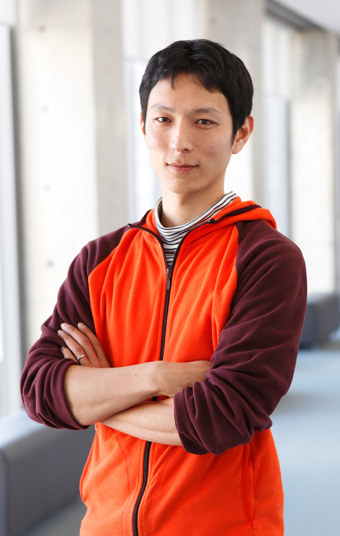
Satoru Mochida
Web siteAssociate Professor
POIE
Kumamoto UniversityTitle
Reconstitution of the cell division cycle in vitro
Standard type Period:5yearsSummary
Replication of the principal element of lives, DNA, has already been reconstituted in vitro. In this research project, we aim to reconstitute the cell division cycle using defined factors for a better understading of what life is. Since that protein phosphorylation is the major driving force of this phenomenon, analyses of protein phosphatases as well as kinase would lead to an in-vitro reconstitution of the cell cycle.
Research Results
- 15/Oct/2015
- Mochida S. “PP1 inactivates Greatwall to release PP2A-B55 from mitotic confinement” EMBO reports (2015) 16(11), 1411-1412.
- 4-7/Sep/2015
- Oral Presentation: "CDK, PP2A And CDK-dependent PP2A-inhibitory pathway Can Make A Switch-like Response of Mitotic Phosphorylation" at the EMBO Cell Cycle Workshop・Budapest, Hungary.
- 12/Nov.2015
- Hino H., Tanaki K., Mochida S. “Inhibitor-1 and -2 of PP2A have preference between PP2A complexes” Biochem. Biophys. Res. Commun. (2015) 467(2), 297-302.
- 27/May/2014
- Mochida S. “Aurora borealis wraps Plk1 and CDK together” Cell Cycle, (2014) 13(12), 1835.
- 10/Mar/2014
- Okumura E., Morita A., Wakai M., Mochida S., Hara M. and Kishimoto T. “Cyclin B-Cdk1 inhibits protein phosphatase PP2A-B55 via a Greatwall kinase-independent mechanism.” J. Cell Biol., (2014) 204(6), 881-889.
- 22/Feb/2014
- Oral Presentation: "Regulation of alpha-endosulfine, an inhibitor of protein phosphatase 2A, by multisite phosphorylation" at the 2nd Taiwan-Japan Bilateral Conference on Protein Phosphatases,National Health Research Institutes,Taiwan
- 4/Jan/2014
- Yusuke T. Maeda "Regulation of alpha-endosulfine, an inhibitor of protein phosphatase 2A, by multisite phosphorylation" FEBS Journal Dec.10(2013)
- Nov/2013
- Oral Presentation: "Regulation of alpha-endosulfine, an inhibitor of PP2A-B55, by multisite phosphorylation”at the 2nd Taiwan-Japan Bilateral Conference on Protein Phosphatases,"National Health Research Institutes, Taiwan.
- 20/Jan/2012
- Mochida S. and Hunt T. “Protein phosphatases and their regulation in the control of mitosis” EMBO Rep. (2012) 13(3), 197-203.
-

Integrating Develpmental Biology and Synthetic Gene Network
Kana Ishimatsu
-

Regulatory mechanisms of scaling in ensuring robust proportional similarity of the embryo.
Hidehiko Inomata
-

Constructive approach for understanding tissue-specific clock functions in plants
Motomu Endo
-

Establishment of disease model cells by resealing cell technique
Fumi Kano
-

Visalization of single protein molecule dynamics revealing its functional characteristics in assembly of proteins and in vivo organs
Motoshi Kaya
-

Discovery and production of artificial secondary metabolites
Yuki Goto
-

Towards understanding and manipulation of self-organizing aspects of cell shape dynamics and cell motility.
Satoshi Sawai
-

Reconstitution of Oscillation Circuit for Chromosome Replication
Masayki Suetsugu
-

Quantitative analysis for spatiotemporal dynamics of nonequilibrium artificial cell models
Masahiro Takinoue
-

Development of bacterium reconstitution device
Kazuhito Tabata
-

Toward understanding the mechanisms by which sponges construct the spiculous skeleton that supports the sponge body
Noriko Funayama
-

Understanding the origins of life through molecular transport: Dynamic coupling of structure, information, transport and its application to new molecular manipulation
Yusuke Maeda
-

Reconstitution of the cell division cycle in vitro
Satoru Mochida



